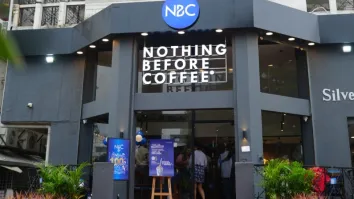
QSR operators discuss the importance of digitalisation and home delivery
Learn more from the key executives at 4 Fingers, Burger King, McDonald’s, Foodpanda, and others.
Branded as the biggest innovation since home delivery, digitalisation promises a bigger market opportunity as it generates a new source of income for businesses in the F&B industry. Quick service restaurants (QSRs) are forced to upgrade their physical stores and introduce innovative digital offerings to cater to the consumers’ changing behaviours and preferences.
Discussions in the recently concluded roundtable organised by QSR Asia in partnership with Oracle Hospitality centred around the theme, "Growth through Innovation." It was attended by key executives from 4 Fingers, Burger King, Diyi F&B, Food Junction Holding Ltd, Garden Kadhai, Joe & Dough, McDonald’s, Foodpanda, and Timbre Group.
Digitalisation of delivery
Aspa Lekka, managing director of Foodpanda, kicked off the discussion with her presentation on which businesses are winning in the digital scene. The base practice in terms of designing a digital lot is incorporating a streamlined process into the website. Devising the best digital strategy doesn’t lie within the complexity of a brand’s website interface. According to Lekka, simplicity is the guiding principle of a good website. “In order for a brand to have success in its digital strategy, its customers need to convert. The website, which is the easiest and fastest digital platform, doesn’t require a grand color scheme. Design does help, but it’s not the winning factor. Personalisation improves conversion.”
The second point she raised was about how companies can digitalise their businesses smartly and how they can better understand the entire process of going digital. The multiple channels that come with the process enable the user to have a better understanding on where to invest their money to create awareness. Users can objectively track their competitors and ensure optimisation of processes in order to reach target revenues for a specific year.
Aspa also noted that acquiring new customers rather than investing to bring back the old customers is not necessarily a smart decision. Customer lifetime value is essential, and acquiring people just for the sake of acquisition means nothing. Not being able to retain your customers with a strategy means a brand will soon face failure.
Whilst technology is a way for the industry players to boost their sales, brands can also create their own models that could be most effective for them to step up the game.
Convenience is king
Each company in the QSR industry is searching for the perfect location and innovating menus to better suit the tastes of locals to bring convenience to the customers. As convenience gets continually redefined, brands need to modernise.
The delivery business is booming in the US, and delivery companies have significantly grown their revenue. Following the trend, 4 Fingers plans to launch an application that allows the customers to locate the nearest branch and then pay online, but they’re not launching it until they find cheaper MDRs. 4 Fingers’ CEO Steen Puggaard said, “We’re seeing that as a way to provide convenience to our customers – just removing all that obstacles and creating an easy way to it. We’ve also revamped the interface to see what customers think about our food, customise the offer, what should be on the app once.”
The McDonald’s US drive-thru outlets account for 70% of the franchise sales, whilst drive-thru opportunities in Asia are limited. Mcdonald’s Singapore has a larger market compared to other competitors and consequently has the stronger distribution. “In Singapore, the issues are just some coverage issues about priming – the consumers don’t like to wait. You could live anywhere in Singapore, we could reach you with 40 minutes’ drive but the problem is the waiting.”
Joe & Dough’s director Dawn Wee said, “You’ve got more to impress, and they want convenience. Digital, I think, is the way forward and I think if you’re not doing it, you’ll probably lose as well.”
Whilst other QSRs are jumping on the digital bandwagon, Garden Kadhai continues to embrace the non-technical variable of the equation. The director said that 40% of their customers still pay in cash. Danny Loong of Timbre Group also highlighted the importance of maintaining a personal touch in serving customers. They have a live music venue, and their goal is to make sure people sit down and enjoy whilst drinking beer.
Cost of delivery
Singaporeans do not like to wait in line, and in-store sales are being converted to home delivery sales. But despite the overwhelming demand for delivery, the brands are challenged by the weight of its costs.
Utilising technology in marketing is the next proposition for the QSRs, or else they’ll be part of the statistics. According to 4 Finger’s CEO, 28% of all outlets in Singapore closes every year. The industry employs 5% of the workforce, but only contributes 1% to GDP. The ratio is a complete disproportion. “We are finding ways to manage the cost. But the thing is, food delivery is only going to grow and we need to shape up a future footprint, a future presence to reflect that. Otherwise, prime locations are not going to be part of the statistics and close.”
Aspa discussed about internal cost – with partnered brands incorporating a high price to their products, or having poor quality menu, or employing substandard operations, every unsatisfactory action of the said brand will reflect back a negative image to the delivery operations of companies such as Foodpanda. “Customers are very price-sensitive nowadays. For brands, putting up a high price means nothing, but for us, that meant that instead of paying $10 for our people, we pay $15 or $20. It’s also not sustainable on our side. There’s a very fine line on how much we’re paying to sustain the business to keep this growth coming up.”
Steen said, “It is a new business that we need to find a way to monetise, and if we don’t consider that it has a different cost structure than the ones that we are in, we’re trying to put a square shape in a round hole. There are no more new customers, and there are no more new concepts for consumers.”
Engine of growth
As QSRs become more technologically advanced to provide what consumers want, they also figure out new solutions to existing issues.
The CEO of 4Fingers raised the importance of creating a positive experience for customers by leveraging to the monetary demands and expectations of employees. “If you pay more, people will stay longer and they will become more productive. We need to consider how we can provide more value to our customers by providing not just low prices, but also a better experience.”
4Fingers is focused on building a brand with a strong experience attached to it, using technology as an enabler, or as a tool to completely reinvent the business.
Foodpanda advised QSRs that delivery is the best way to go forward as it provides brands additional streams of revenue. Losing profit means losing your brand’s relevance in the market. The challenge now for the QSR brands is to maintain a structure that is cost-efficient and sustainable. For an online-based business operator to get into the market, factors of success do not depend on the service or delivery time, but rather on the food quality, creative packaging, and personalised imagery.


























